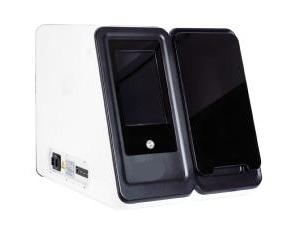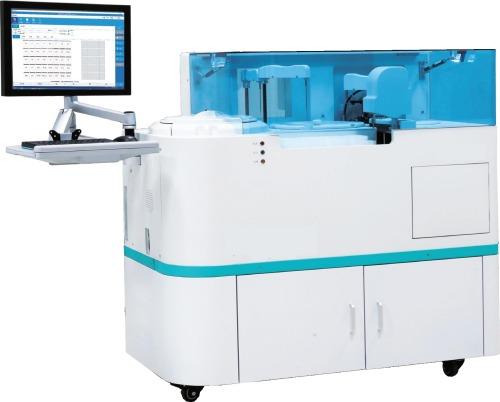Introduction: What is an Automatic Chemiluminescence Immunoassay Analyzer?
In the ever-evolving world of medical diagnostics, precision and speed are paramount. One of the most powerful technologies currently used in clinical laboratories to detect a range of diseases is the Automatic Chemiluminescence Immunoassay Analyzer (CLIA). This sophisticated piece of equipment combines immunological methods with chemiluminescence, offering quick and accurate results with minimal human intervention.
The Automatic Chemiluminescence Immunoassay Analyzer works by using light (chemiluminescence) produced during a chemical reaction to quantify specific substances in biological samples like blood, serum, or plasma. These analyzers are highly automated, significantly reducing manual labor and increasing diagnostic throughput.
The technology works by detecting light emissions that occur when a chemical reaction generates photons, with the intensity of the light corresponding to the amount of target analyte present in the sample.
How Does an Automatic Chemiluminescence Immunoassay Analyzer Work?
At the core of a CLIA is the interaction between an antigen (the substance you want to test for) and an antibody (a protein that specifically binds to the antigen). When the antigen and antibody react, a chemiluminescent substance like luminol or acridinium ester is used to tag the antibody. This substance emits light when it reacts with an oxidant. The emitted light is measured by the analyzer's detector and is directly proportional to the concentration of the target analyte.
Let’s break down the process in simple steps:
- Sample Preparation: Blood or plasma samples are introduced to the analyzer.
- Reagent Mixing: The sample is mixed with specific reagents (antibodies) labeled with chemiluminescent substances.
- Reaction & Light Emission: The analyte (such as a hormone, virus, or protein) reacts with the antibody, causing a light-emitting reaction.
- Measurement: The light intensity is measured by a detector, and the concentration of the analyte is calculated.
This approach enables extremely high sensitivity and specificity, detecting even trace amounts of substances that other methods may miss.
Key Features of Automatic Chemiluminescence Immunoassay Analyzers
Here are the standout features that make Automatic CLIA Analyzers so effective in modern diagnostics:
| Feature | Description |
|---|---|
| High Throughput | Capable of processing up to 120 tests per hour, making them ideal for busy labs. |
| Fast Results | First result available in just 15 minutes, speeding up diagnosis. |
| Repeatability | Excellent repeatability (CV ≤ 8%), ensuring consistent, reliable results. |
| Easy to Use | Fully automated system minimizes manual handling, reducing human error. |
| Wide Range of Tests | Supports a variety of tests, including hormones, infectious diseases, and cancer markers. |
These features make automatic CLIA analyzers a preferred choice in many diagnostic labs worldwide.
Applications of Chemiluminescence Immunoassay in Diagnostics
The versatility of chemiluminescence immunoassays means they are used for a wide variety of tests. Let’s take a look at some of the common diagnostic areas:
- Infectious Disease Testing: CLIA is widely used to detect viruses and pathogens such as HIV, Hepatitis, COVID-19, and HPV(AxisPharm).
- Cancer Biomarkers: Tests for tumor markers like PSA (Prostate-Specific Antigen) and CA-125 (Ovarian Cancer Marker) can be run on CLIA analyzers.
- Hormone and Metabolic Tests: From thyroid function tests to diabetes-related markers (such as insulin), CLIA helps monitor conditions efficiently.
- Cardiac Markers: The detection of markers like troponin or BNP used in diagnosing heart attacks or heart failure is another common use(Lab Tests Guide).
This broad application range demonstrates the analyzer’s critical role in diverse medical fields.
Types of Chemiluminescence Immunoassays
While the term CLIA typically refers to all chemiluminescence-based immunoassays, there are actually several different types based on the specific luminescent materials and detection methods used. Here's a quick comparison:
| Type of CLIA | Principle | Example Applications |
|---|---|---|
| Traditional CLIA | Uses agents like luminol or acridinium esters to generate light from antigen-antibody reactions. | Detection of hormones, cancer biomarkers. |
| Chemiluminescent Enzyme Immunoassay (CLEIA) | Enzymes like HRP (Horseradish Peroxidase) enhance luminescence, improving sensitivity. | DNA testing, gene mutations detection. |
| Electrochemiluminescent Immunoassay (ECLIA) | Uses electrochemical methods to trigger light emission, allowing highly sensitive detection. | Electrochemical detection for small molecules. |
This variety of chemiluminescence immunoassays allows laboratories to select the best-suited method depending on the application, sensitivity, and speed required.
Advantages of Using an Automatic Chemiluminescence Immunoassay Analyzer
Here are some key benefits of switching to an automatic CLIA system:
- Accuracy: The automation of processes reduces the likelihood of human error, leading to more accurate results.
- High Sensitivity: CLIA can detect very low concentrations of analytes, making it ideal for early-stage detection of diseases.
- Fast Results: With first results often available in 15 minutes, CLIA analyzers significantly cut down waiting times for critical test results.
- Cost-Efficiency: While the initial investment can be significant, the automation of the system reduces the need for additional labor, making it a cost-effective solution in the long run(Lab Tests Guide).
Challenges and Considerations When Using Automatic Chemiluminescence Immunoassay Analyzers
Despite their many advantages, there are some challenges that laboratories may face when using automatic CLIA analyzers:
- Initial Costs: The equipment can be expensive, and smaller labs may find the upfront investment difficult.
- Reagent Supply: Some tests require specialized reagents that can add to operational costs.
- Complex Maintenance: While the system is automated, it still requires regular calibration, maintenance, and occasional troubleshooting.
We also provide comprehensive after-sales service.
However, these challenges are typically outweighed by the high throughput, accuracy, and time-saving benefits that CLIA analyzers bring to the table.
Have questions? We offer free consultation.
Conclusion: Why Should Laboratories Adopt Automatic CLIA Technology?
The Automatic Chemiluminescence Immunoassay Analyzer represents a leap forward in diagnostic technology, offering high-speed, high-accuracy, and automated solutions for laboratories worldwide. With applications ranging from cancer screening to hormone testing, it is clear why CLIA is becoming a preferred method in modern medical diagnostics.
By adopting this technology, laboratories can expect:
- Increased throughput without compromising quality.
- Faster diagnostic results, improving patient care.
- A more streamlined, error-free workflow.
As we continue to push the boundaries of medical diagnostics, automatic CLIA analyzers are poised to play an even more significant role in early detection, precision medicine, and overall patient health.
→Click here to learn more about our Chemiluminescent Analyzer
or

